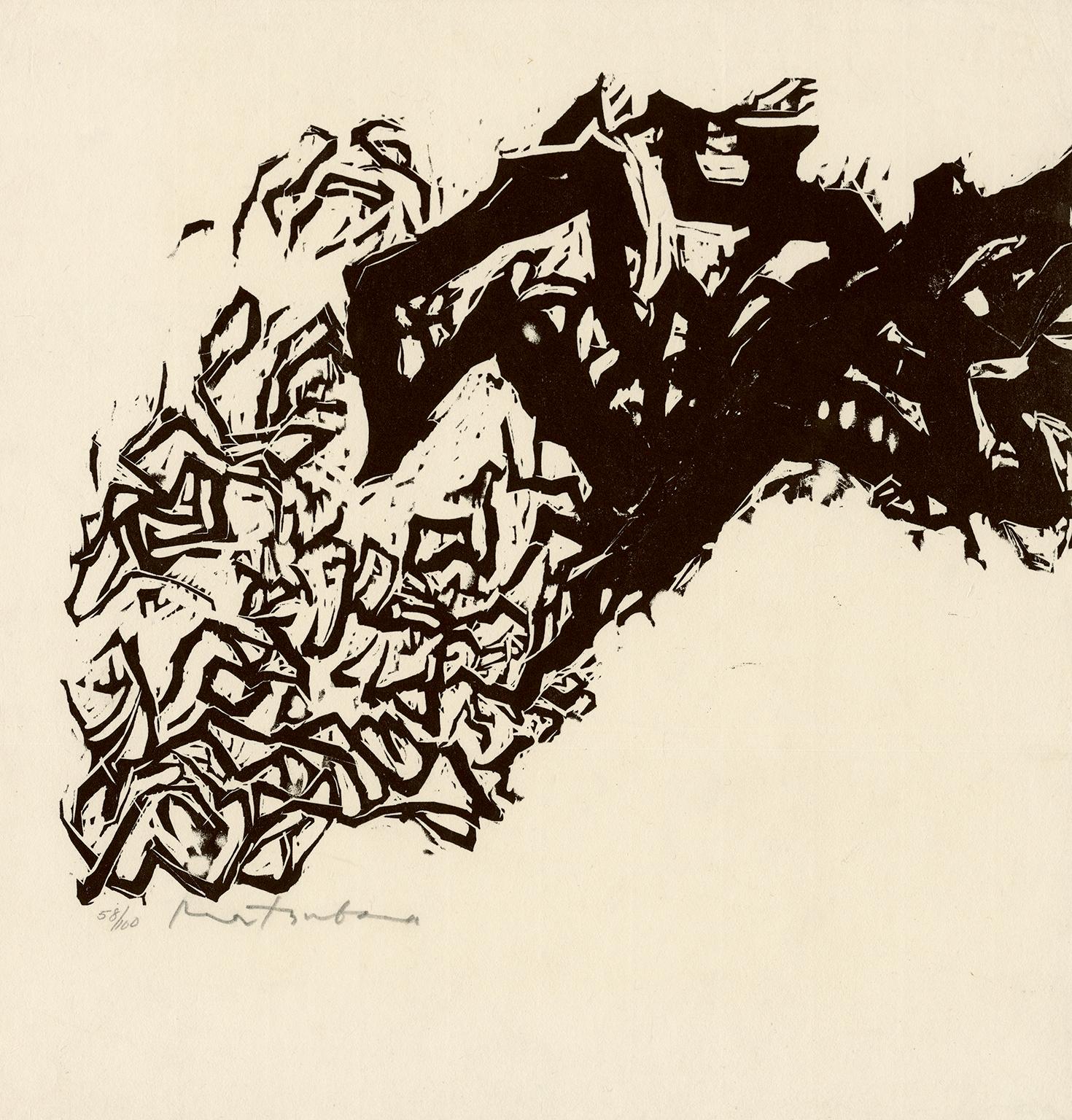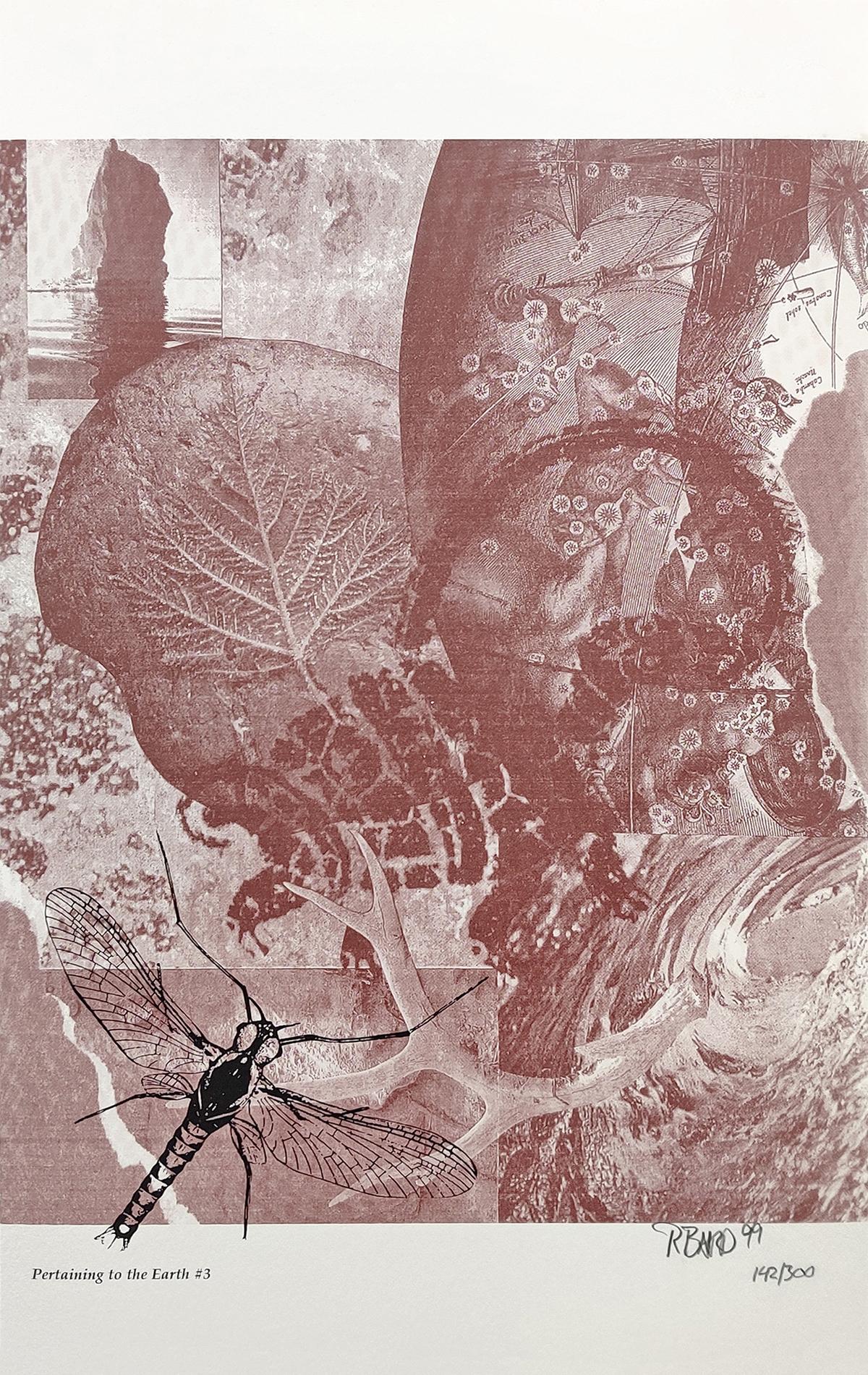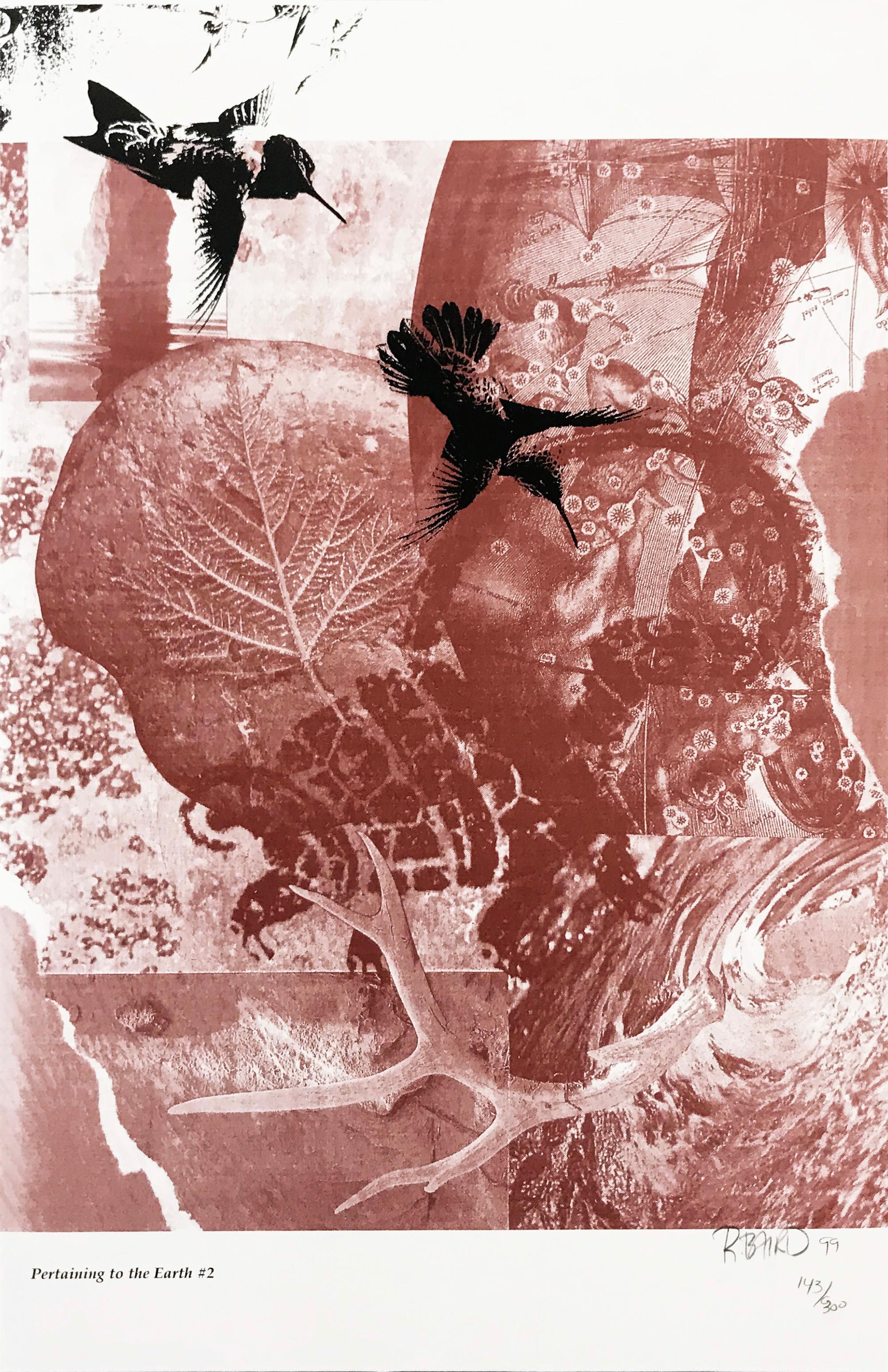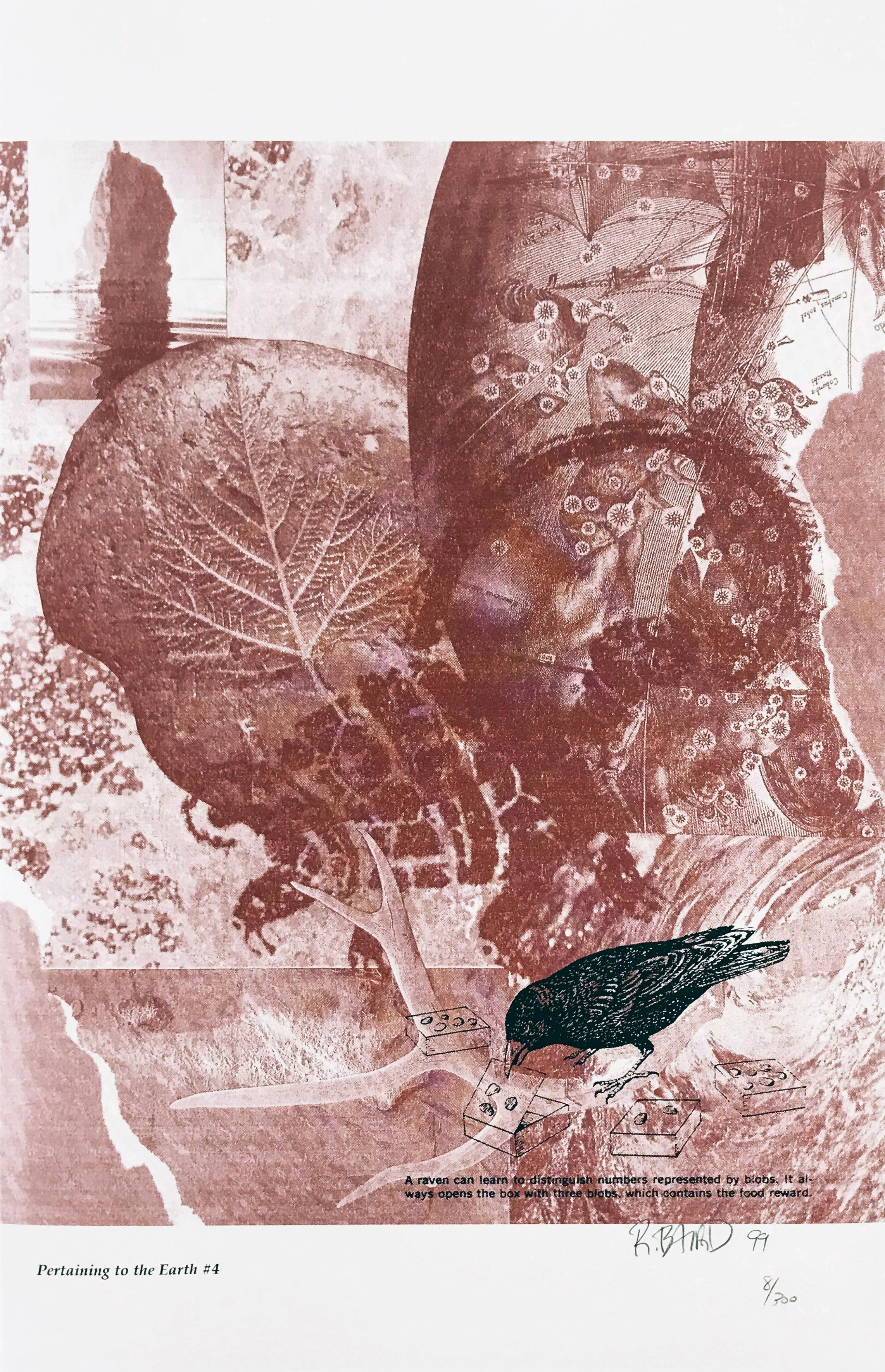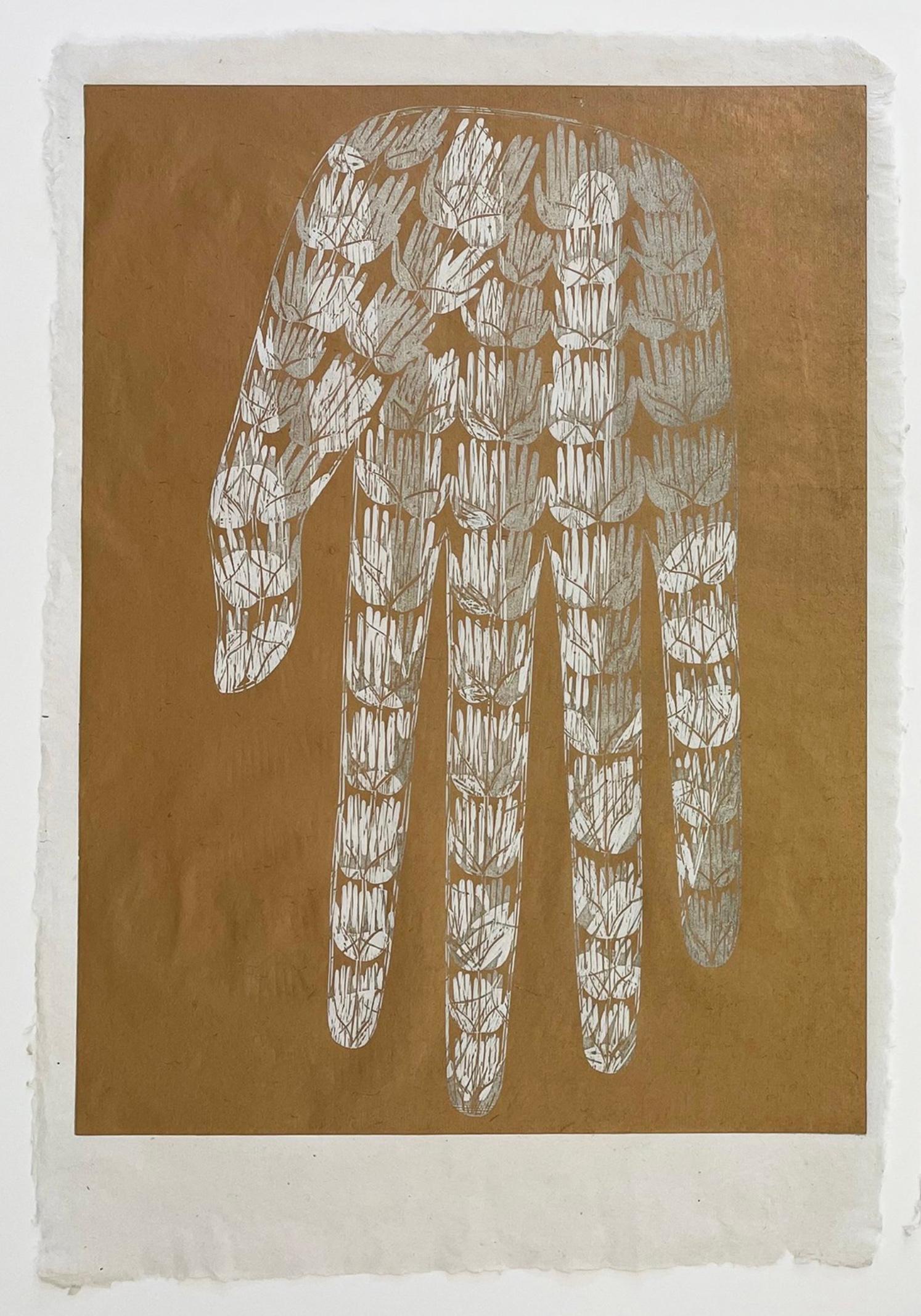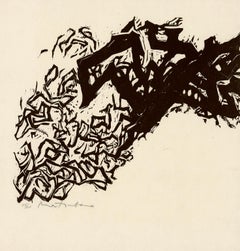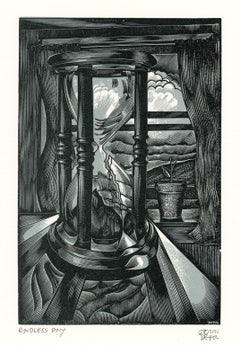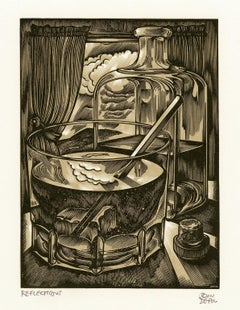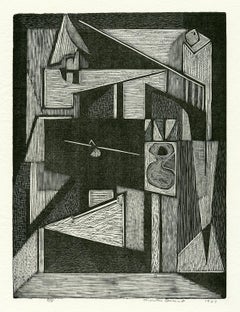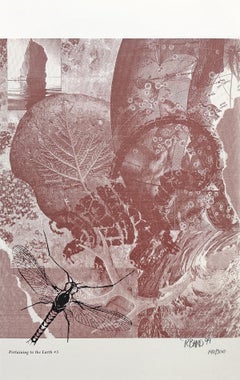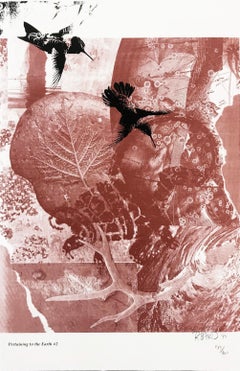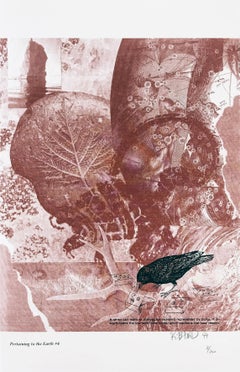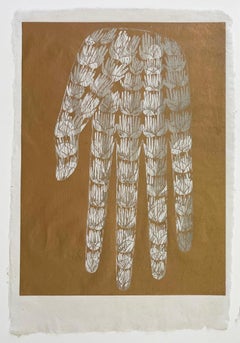Items Similar to 'Drop of Life' — from 'Solitude' for Henry David Thoreau's 'Walden'
Want more images or videos?
Request additional images or videos from the seller
1 of 6
Naoko Matsubara'Drop of Life' — from 'Solitude' for Henry David Thoreau's 'Walden'1971
1971
$350
£271.22
€307.78
CA$501.64
A$550.90
CHF 283.58
MX$6,591.68
NOK 3,610.63
SEK 3,383.69
DKK 2,298.61
About the Item
Naoko Matsubara, 'Drop of Life' for the portfolio 'Solitude', color woodcut, 1971. A fine impression with fresh, vivid colors, on cream laid Japan paper, the full sheet with margins, in excellent condition. Archivally sleeved, unmatted.
Image size 13 1/2 x 12 1/4 inches; sheet size 15 1/2 x 14 1/4 inches.
An impression from the portfolio of 11 prints entitled 'Solitude' designed to accompany an essay from Walden by Henry David Thoreau (1817-1862), published by Aquarius Press, apart from the numbered signed and numbered edition of 100.
Impressions of this work are in the permanent collections of the British Museum (London), the National Museum of Modern Art, Tokyo; the Portland Art Museum; Rhode Island School of Design Museum; and the Smithsonian National Museum of Asian Art.
ABOUT THE ARTIST
Naoko Matsubara was born in 1937 on the island of Shikoku, Japan, and grew up in Kyoto. Her father was one of Japan's most senior Shinto priests, and her mother came from a very old Shinto family. After graduating from the Kyoto Academy of Fine Arts (now Kyoto Fine Arts University), she went to the United States as a Fulbright scholar, studying for a year at the Carnegie Institute of Art (now Carnegie Mellon University) in Pittsburgh, where she received her MFA. Subsequently, she was invited to study at the Royal College of Art in London; she traveled extensively in Europe and Asia before returning to Japan in 1963. In 1965, she returned to the United States as personal assistant to Fritz Eichenberg, a renowned wood-engraving artist and historian of print-making.
Matsubara taught at the Pratt Graphic Center in New York and the University of Rhode Island before settling in Cambridge, Massachusetts, as a freelance artist. In 1972, following her marriage to David Waterhouse, a professor of East Asian Studies at the University of Toronto, she moved to Canada. She remains intensely active as an artist of single-sheet woodcuts, portfolios, and illustrated books, as well as a painter and a mural artist, working out of her studio in Oakville, Ontario. She has traveled widely, written prolifically, and lectured in English and Japanese. In 1981, she was elected a Fellow of the Royal Canadian Academy of Arts.
Matsubara taught at Pratt Institute, the University of Rhode Island, and the University of California. Her work is represented in numerous museum collections: Albertina Museum, Vienna; Fogg Museum, Harvard University; Boston Museum of Fine Arts; Cincinnati Art Museum; Tokyo National Museum of Modern Art; Kyoto National Museum of Modern Art; Brooklyn Museum of Art; Detroit Art Institute; Art Gallery of Greater Victoria, British Columbia; Library of Congress, Washington, D.C.; Boston Public Library; New York Public Library; Yale University Art Gallery, New Haven; Philadelphia Museum of Fine Arts. In 2009, a one-person retrospective of her work was held at the Carnegie Institute of Art, Pittsburgh.
About the Seller
5.0
Recognized Seller
These prestigious sellers are industry leaders and represent the highest echelon for item quality and design.
Platinum Seller
Premium sellers with a 4.7+ rating and 24-hour response times
Established in 1995
1stDibs seller since 2016
328 sales on 1stDibs
Typical response time: 1 hour
Associations
International Fine Print Dealers Association
- ShippingRetrieving quote...Shipping from: Myrtle Beach, SC
- Return Policy
More From This Seller
View All'Winter Serenity' —from 'Solitude' for Henry David Thoreau's 'Walden'
Located in Myrtle Beach, SC
Naoko Matsubara, 'Winter Serenity' for the portfolio 'Solitude', woodcut, 1971, edition 100. Signed and numbered '58/100' in pencil. A fine, richly-inked impression, on cream laid J...
Category
1970s Modern Figurative Prints
Materials
Woodcut
Endless Day
By John DePol
Located in Myrtle Beach, SC
John DePol, 'Endless Day', chiaroscuro wood engraving, 1979, edition 160 in 1983. Signed, dated, and titled in pencil. Signed in the block, lower right. A superb impression, on off-w...
Category
1970s American Modern Figurative Prints
Materials
Woodcut
Reflections
By John DePol
Located in Myrtle Beach, SC
John DePol, 'Reflections', chiaroscuro wood engraving, 1979, edition 160 in 1983. Signed, dated and titled in pencil. Signed in the block, lower right. A superb impression, on cream ...
Category
1970s American Modern Figurative Prints
Materials
Woodcut
Still Life — Mid-century Modern
By Charles Quest
Located in Myrtle Beach, SC
Charles Quest, 'Still Life', 1947, wood engraving, edition 8. Signed, dated, and numbered '3/8' in pencil. Titled and annotated 'wood engraving' in the bottom left margin. A fine impression, on off-white wove paper, with full margins (1 to 2 inches), in excellent condition. Scarce. Matted to museum standards, unframed.
ABOUT THE ARTIST
Charles Quest, painter, printmaker, and fine art instructor, worked in various mediums, including mosaic, stained glass, mural painting, and sculpture. Quest grew up in St. Louis, his talent evident as a teenager when he began copying the works of masters such as Michelangelo on his bedroom walls. He studied at the Washington University School of Fine Arts, where he later taught from 1944 to 1971. He traveled to Europe after his graduation in 1929 and studied at La Grande Chaumière and Academie Colarossi, Paris, continuing to draw inspiration from the works of the Old Masters.
After returning to St. Louis, Quest received several commissions to paint murals in public buildings, schools, and churches, including one from Joseph Cardinal Ritter, to paint a replica of Velasquez's Crucifixion over the main altar of the Old Cathedral in St. Louis. Quest soon became interested in the woodcut medium, which he learned through his study of J. J. Lankes' A Woodcut Manual (1932) and Paul Landacre's articles in American Artist magazine ‘since no artists in St. Louis were working in wood’ at that time. Quest also revealed that for him, wood cutting and engraving were ‘more enjoyable than any other means of expression.’
In the late 1940s, his graphic works began attracting critical attention—several of his woodcuts won prizes and were acquired by major American and European museums. His wood engraving entitled ‘Lovers’ was included in the American Federation of Art's traveling print exhibition in 1947. Two years later, Quest's two prize-winning prints, ‘Still Life with Grindstone’ and ‘Break Forth into Singing’, were exhibited in major American museums in a traveling show organized by the Philadelphia Print Club. His work was included in the Chicago Art Institute's exhibition, ‘Woodcut Through Six Centuries’, and the print ‘Still Life with Vise’ was purchased by the Museum of Modern Art in New York.
In 1951 he was invited by artist-Curator Jacob Kainen to exhibit thirty wood engravings and color woodcuts in a one-person show at the Smithsonian's National Museum (now known as the American History Museum). Kainen's press release praised the ‘technical refinement’ of Quest's work: ‘He obtains a great variety of textural effects through the use of the graver, and these dense or transparent grays are set off against whites or blacks to achieve sparkling results. His work has the handsome qualities characteristic of the craftsman and designer.’
At the time of the Smithsonian exhibition, Quest's work was represented by three New York galleries in addition to one in his home town. He had won 38 prizes, and his prints were in the collections of the Library of Congress, the Chicago Art Institute, the Metropolitan Museum, and the Philadelphia Museum of Art. In cooperation with the Art in Embassies program, his color woodcuts were displayed at the American Embassy in Paris in 1951.
Recognition at home came in 1955 with his first solo exhibition in St. Louis. Press coverage of the show heralded the ‘growth of graphic arts toward rivaling painting and sculpture as a major independent medium’.
An exhibition of his prints at the Bethesda Art Gallery in 1983 attracted Curator Emeritus Joseph A. Haller, S.J., who began purchasing his work for Georgetown University's collection. In 1990 Georgetown University Library's Special Collections Division was the recipient of a large body of Quest's work, including prints, drawings, paintings, sculpture, stained glass, and his archive of correspondence and professional memorabilia. These extensive holdings, including some 260 of his fine prints, provide a rich opportunity for further study and appreciation of this versatile and not-to-be-forgotten mid-Western American artist...
Category
1940s American Modern Abstract Prints
Materials
Woodcut
Alongside
By William Thon
Located in Myrtle Beach, SC
William Thon, 'Alongside', watercolor, c. 1990. Signed, lower right; titled verso. A fine, expressionist work, on off-white watercolor paper; the image extending to the sheet edges, ...
Category
1950s American Modern Figurative Drawings and Watercolors
Materials
Watercolor
'Untitled Fantasy' — 1980s Surrealist Abstraction
By Edward August Landon
Located in Myrtle Beach, SC
Edward Landon, 'Untitled Fantasy', color serigraph, 1983, edition 30, Ryan 214. Signed, titled, and annotated 'Edition 30' in pencil. A fine impression, with fresh colors, on off-whi...
Category
Mid-20th Century Abstract Abstract Prints
Materials
Screen
You May Also Like
PERTAINING TO THE EARTH #3
By Rebecca Baird
Located in Aventura, FL
Lithograph on paper. Sheet size 19 x 12 inches. Hand signed, dated and numbered by the artist. Edition of 300.
Certificate of Authenticity Included. Artwork in Excellent Conditi...
Category
Late 20th Century Contemporary Figurative Prints
Materials
Paper, Lithograph
$80 Sale Price
36% Off
PERTAINING TO THE EARTH #2
By Rebecca Baird
Located in Aventura, FL
Lithograph on paper. Sheet size 19 x 12 inches. Hand signed, dated and numbered by the artist. Edition of 300.
Certificate of Authenticity Included. Artwork in Excellent Conditi...
Category
Late 20th Century Contemporary Figurative Prints
Materials
Paper, Lithograph
$80 Sale Price
36% Off
PERTAINING TO THE EARTH #4
By Rebecca Baird
Located in Aventura, FL
Lithograph on paper. Sheet size 19 x 12 inches. Hand signed, dated and numbered by the artist. Edition of 300.
Certificate of Authenticity Included. Artwork in Excellent Conditi...
Category
Late 20th Century Contemporary Figurative Prints
Materials
Paper, Lithograph
$80 Sale Price
36% Off
Boon
Located in Fairfield, CT
Woodcut on mulberry paper, variable edition.
18½ x 24½ inches.
Edition of 6.
Framing is additional $350.
Category
2010s Contemporary Figurative Prints
Materials
Mulberry Paper, Woodcut
Touching one side downside
By Barbara Kuebel
Located in New Orleans, LA
edition 2/5
BARBARA KUEBEL is a Daphne, AL-based artist who uses oil and pencil for her works on paper and on canvas. She was born and raised in Austria and earned two art degrees f...
Category
21st Century and Contemporary Contemporary Prints and Multiples
Materials
Paper, Woodcut
Solace
Located in Fairfield, CT
Woodcut on mulberry paper, variable edition.
18½ x 24½ inches.
Edition of 3.
Framing is additional $350.
Category
2010s Contemporary Figurative Prints
Materials
Mulberry Paper, Woodcut
More Ways To Browse
Japanese Shinto
Tiny Books
Tom Wesselmann Seascape
Toulouse Lautrec La Goulue
Twa Poster Rome
Van Heusen
Venetian Lithograph
Vintage Boudoir Prints
Vintage Canadian Mountie
Vintage Dallas Cowboys
Vintage Derby Poster
Vintage Ex Libris Bookplates
Vintage Stag Prints
Warhol Basquiat Boxing Poster 1985
Warhol Serigraph
Whitney Museum Poster
William Fitz
William H Johnson
